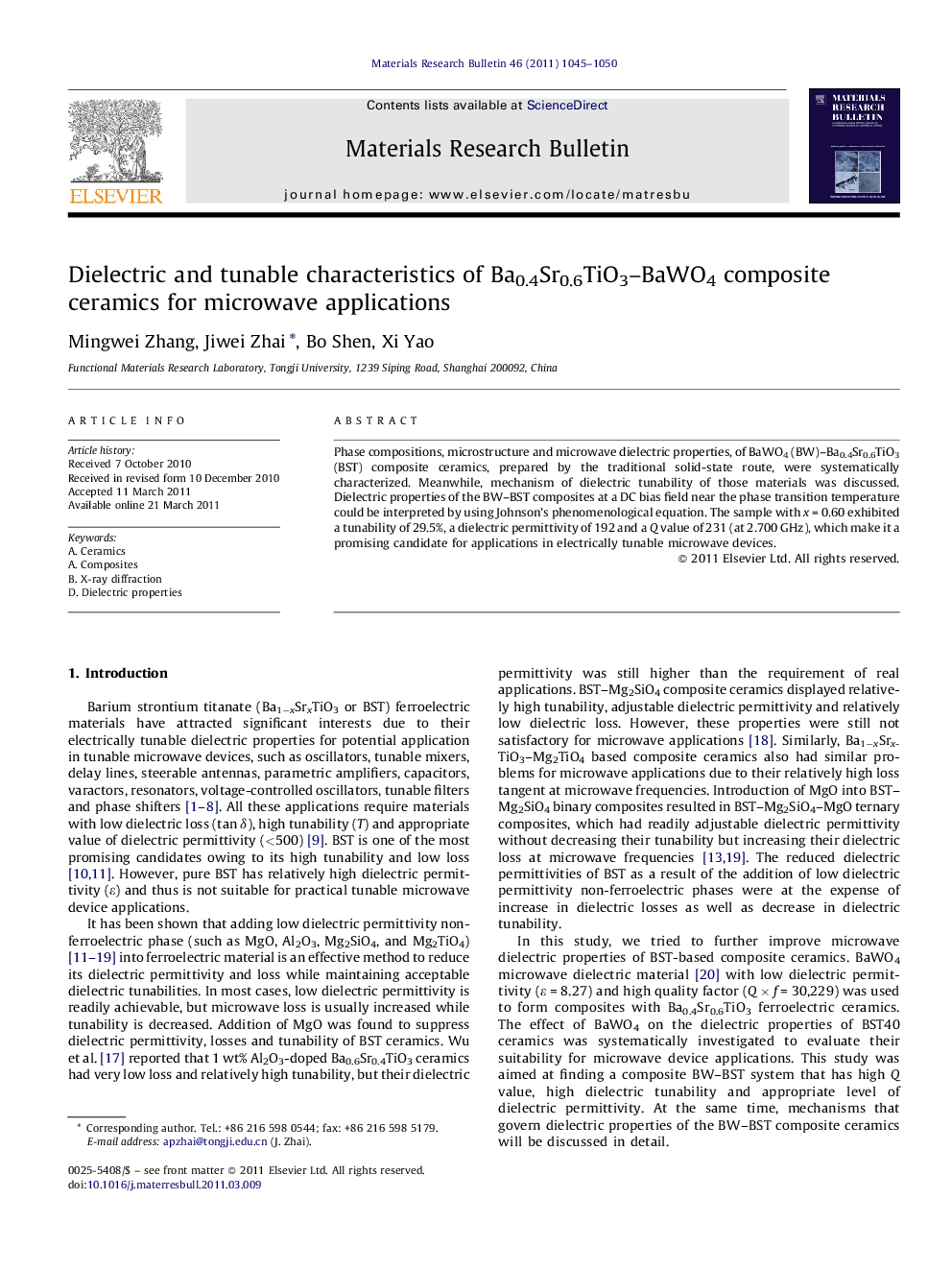| Article ID | Journal | Published Year | Pages | File Type |
|---|---|---|---|---|
| 1490484 | Materials Research Bulletin | 2011 | 6 Pages |
Phase compositions, microstructure and microwave dielectric properties, of BaWO4 (BW)–Ba0.4Sr0.6TiO3 (BST) composite ceramics, prepared by the traditional solid-state route, were systematically characterized. Meanwhile, mechanism of dielectric tunability of those materials was discussed. Dielectric properties of the BW–BST composites at a DC bias field near the phase transition temperature could be interpreted by using Johnson's phenomenological equation. The sample with x = 0.60 exhibited a tunability of 29.5%, a dielectric permittivity of 192 and a Q value of 231 (at 2.700 GHz), which make it a promising candidate for applications in electrically tunable microwave devices.
Graphical abstractThe samples with x = 15 wt% and x = 30 wt% have two linear regions, with a large slope over 0–16 kV/cm−1 and small slope over 16-30 kV/cm−1. It means that the dielectric responses of the composite materials at external DC fields cannot be solely described by the phenomenological theory. This deviation could have other extrinsic contributions, such as polar clusters, microcluster boundaries, defects, and space charge polarization. At a strong DC field, polar micro-domains in nanoscale polar micro-regions would be growing up, resulting in congelation and consolidation of polar micro-regions and a reduction of in number of ferroelectric–paraelectric domain walls. The contribution of reversible polarizations is reduced, which leads to a reduction in permittivity. With further increasing DC field, the congelation and consolidation of polar micro-regions tend to saturate, whose contribution to tunability is dying down. For the samples with x = 45 wt% and x = 60 wt%, since TC is getting closer to measuring temperature, polar micro-region contribution to the change of permittivity is increasing, which is the reason why the slope dose not depress with increasing DC field. In the figure above, the decline slope means a decrease in tunability with increasing content of BW, which can be due to the increase of the non-ferroelectric content.Figure optionsDownload full-size imageDownload as PowerPoint slideHighlights► Get the relation between change of tunability ∼ distance between TC and testing temperature. ► Composite has higher tunability high Q value low dielectric permittivity. ► The comprehensive performance of BST–BW is at the forefront of two-phase compound.
